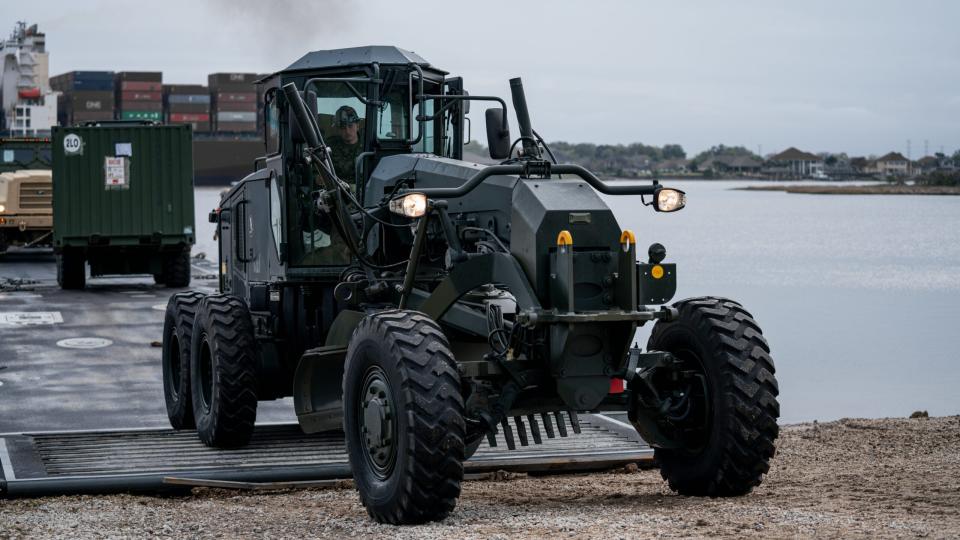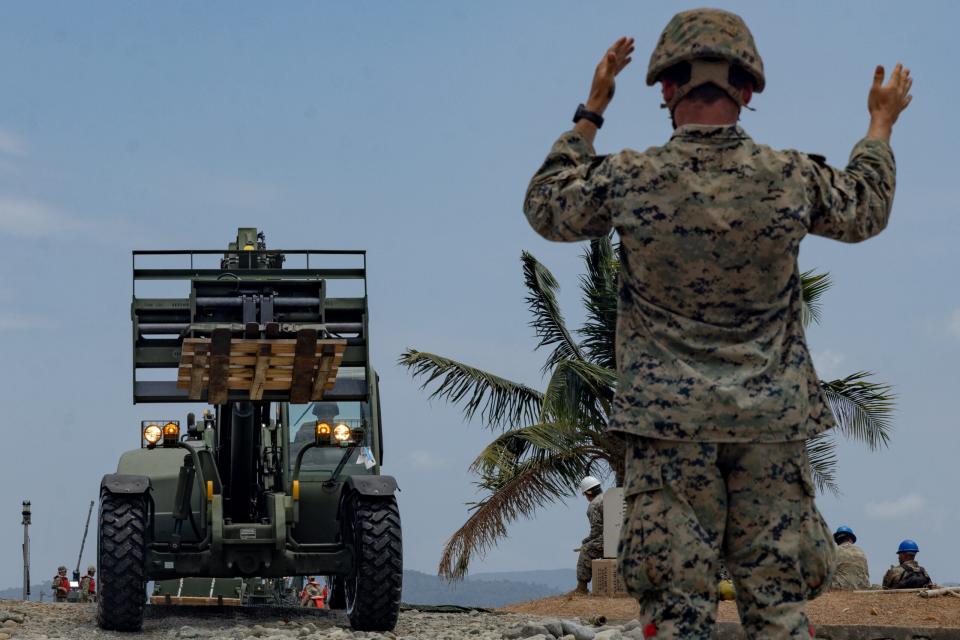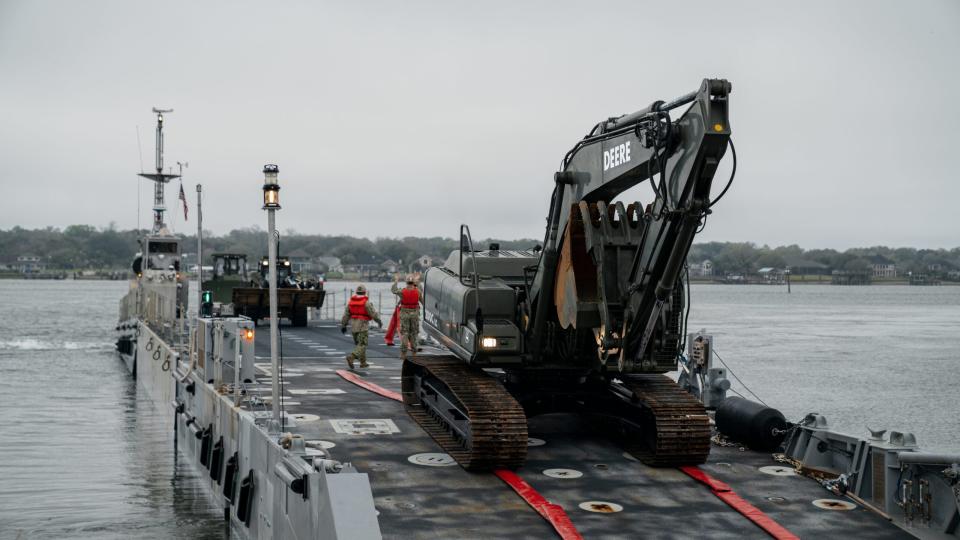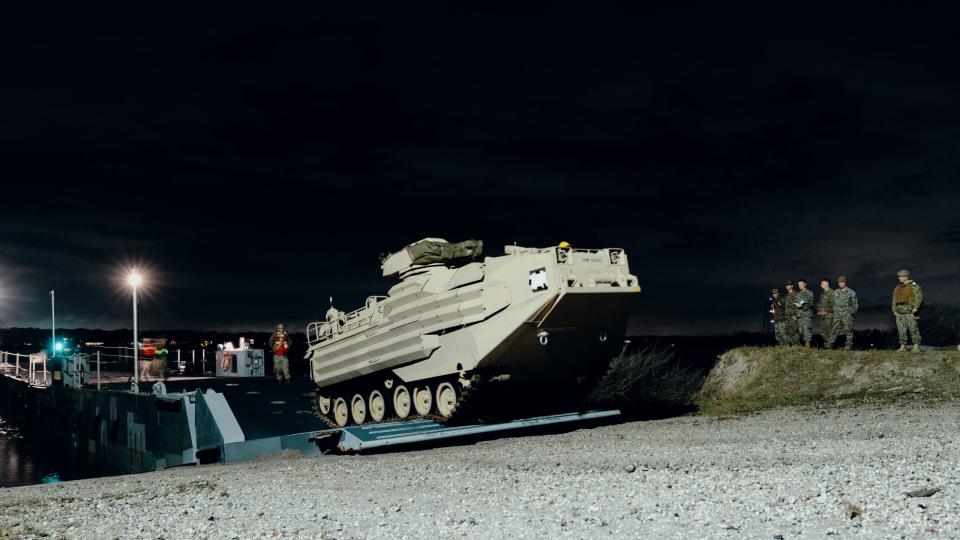13 photos that show how the Navy gets heavy equipment ashore
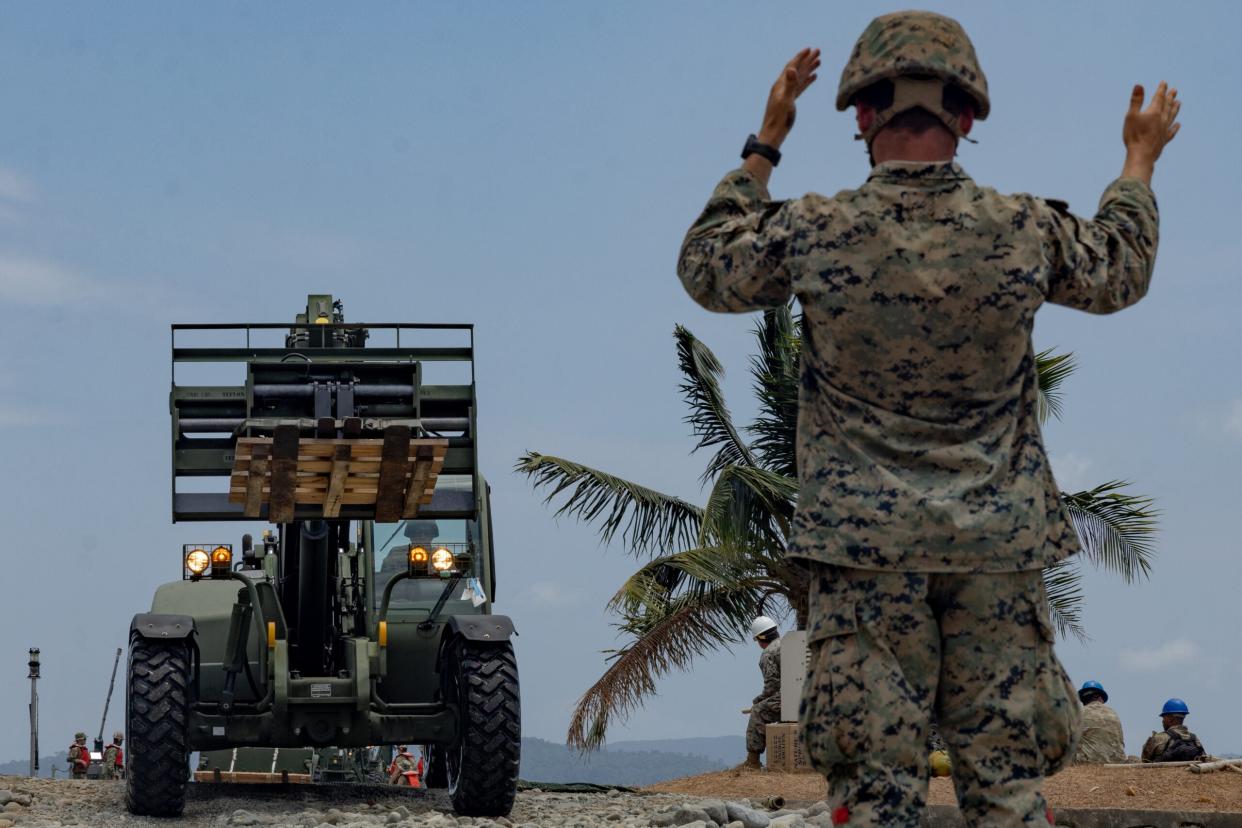
The U.S. Navy is rightly viewed as one of the most capable war fighting forces in the history of humankind. But it's also one of the most successful logistics organizations as well. The Navy takes the lead on most shipments of military gear across the seas. It runs logistics through its warships and the military sealift command's fleet of USNS vessels.
Here are 13 photos that show how it gets equipment from amphibious ships and massive supply vessels to shore
1. The backbone of the logistics fleet are USNS vessels from military sealift command
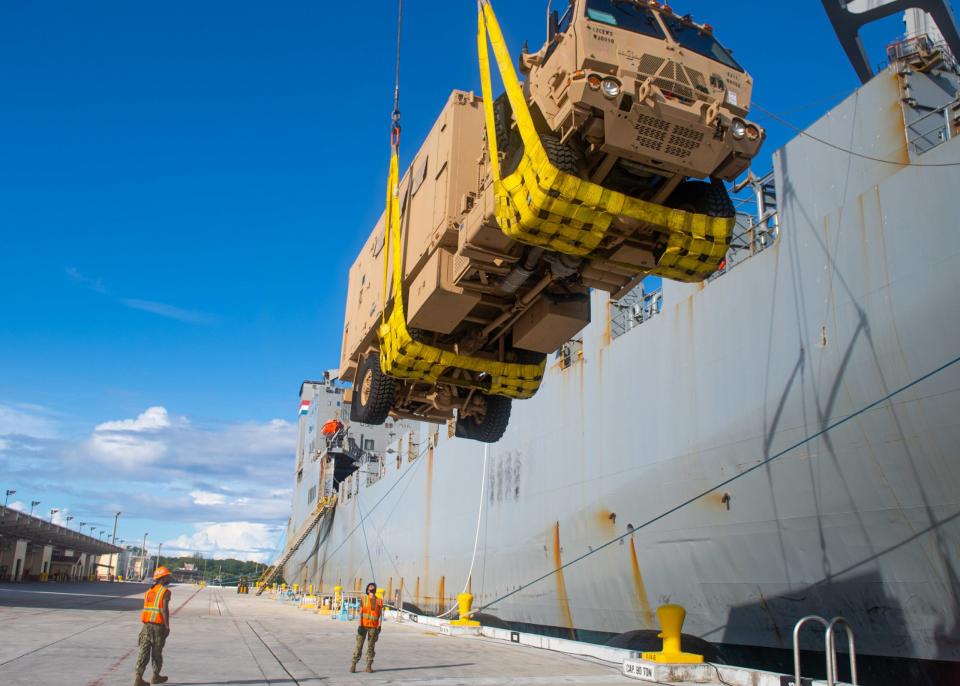
These ships are massive and contain specialty equipment for moving equipment onto and off of the ship. They typically have ramps that allow for heavy equipment to drive on and off as well as a crane that can lift heavy equipment and lower it to a pier or the shore.
2. These military ships can even move entire sections of floating pier or causeway, like the Improved Navy Lighterage System
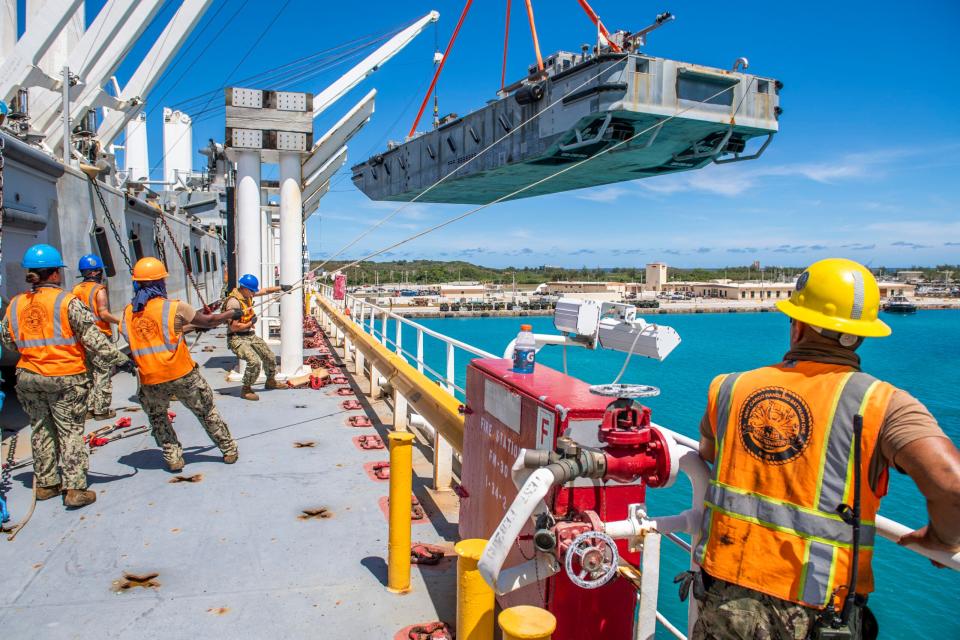
These special pieces of equipment are put together like Legos to create a causeway that can act like a floating pier, allowing the ship to move equipment more quickly off. In this particular photo, the USNS Dahl supported the construction of a COVID-19 facility.
3. Other ships, like dock landing ships and amphibious assault ships, are warships with special logistic capabilities like a well dock
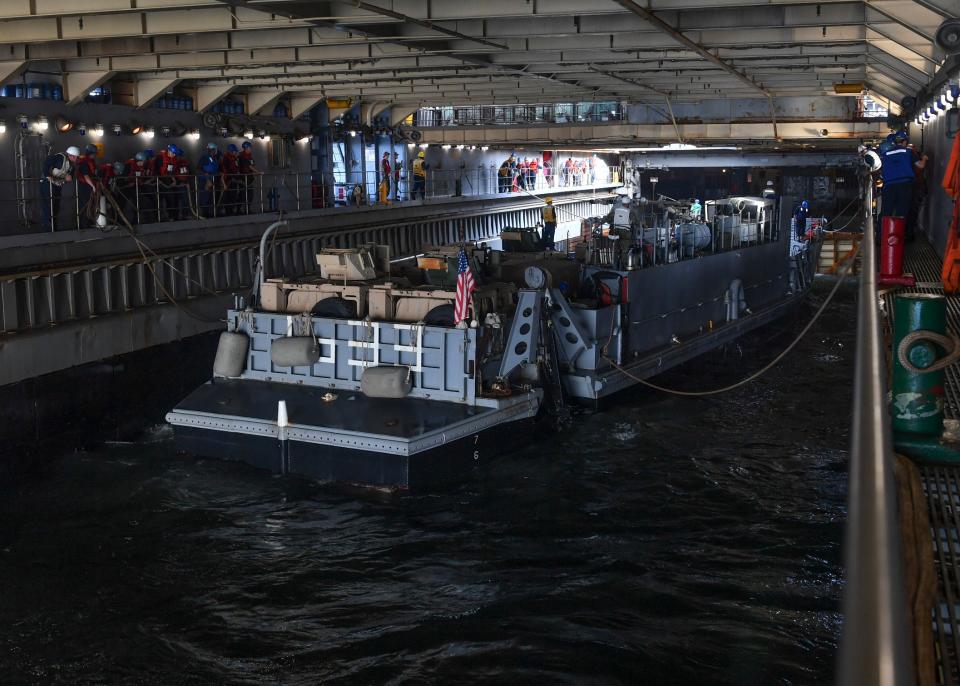
In the well dock, smaller vessels like landing crafts can drive right into the ship. Sailors and Marines then drive equipment from a ramp in the well dock onto landing crafts and similar vessels. These specialized military ships allow troops to deploy rapidly and bring lots of equipment with them.
4. and 5. Military ships then move the equipment from the ship to the shore
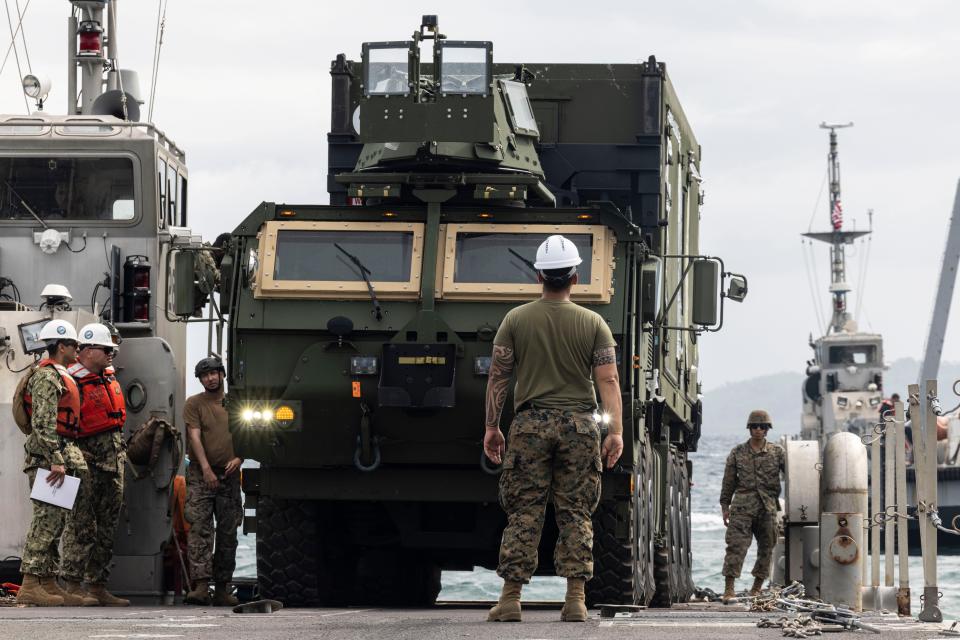
The equipment moved can be as small as a few boxes or as large as trucks, tanks, or other heavy equipment. Specialized sailors ensure that loads are safely secured and tied down. Often, crews move with their equipment to eventually drive their own equipment off the landing craft.

6-8. Landing parties, often from landing support battalions or similar units, set up landing areas on the beaches
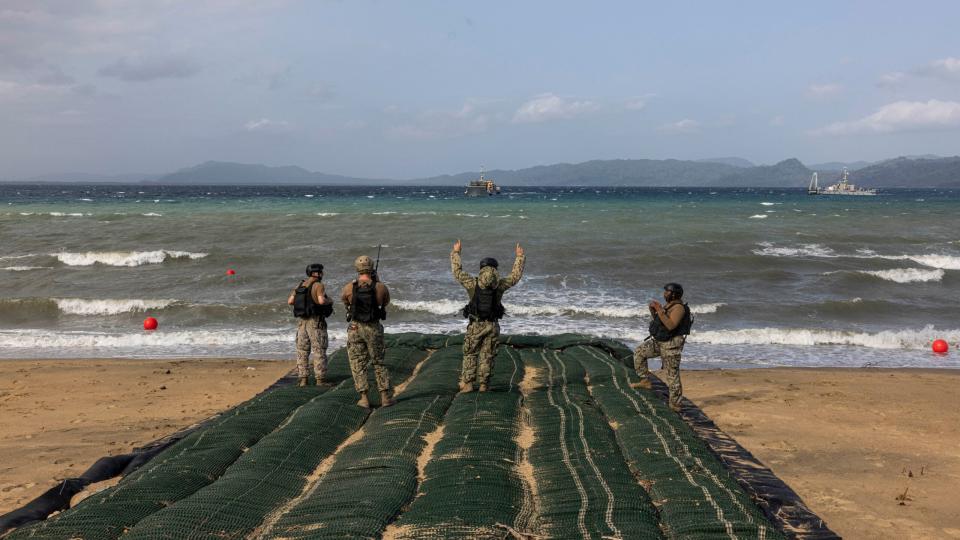
These units specialize in safely receiving cargo on shore. They have to understand weather conditions, different soil types, and how changes affect the vehicles approaching the shore and landing on it. They use special equipment as navigation aids and to build temporary ramps or roads across the sand like the ones in the photos.
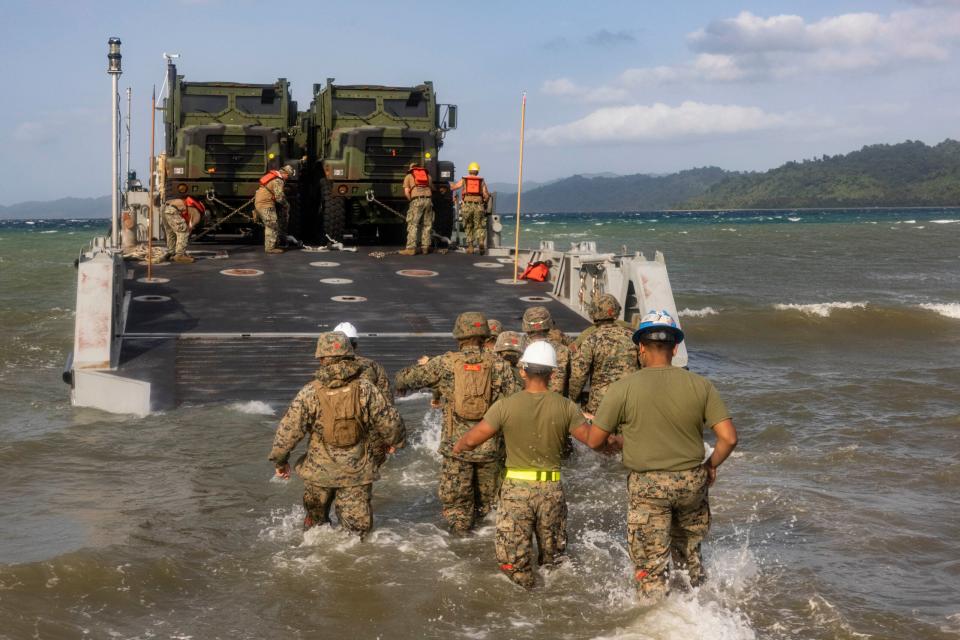
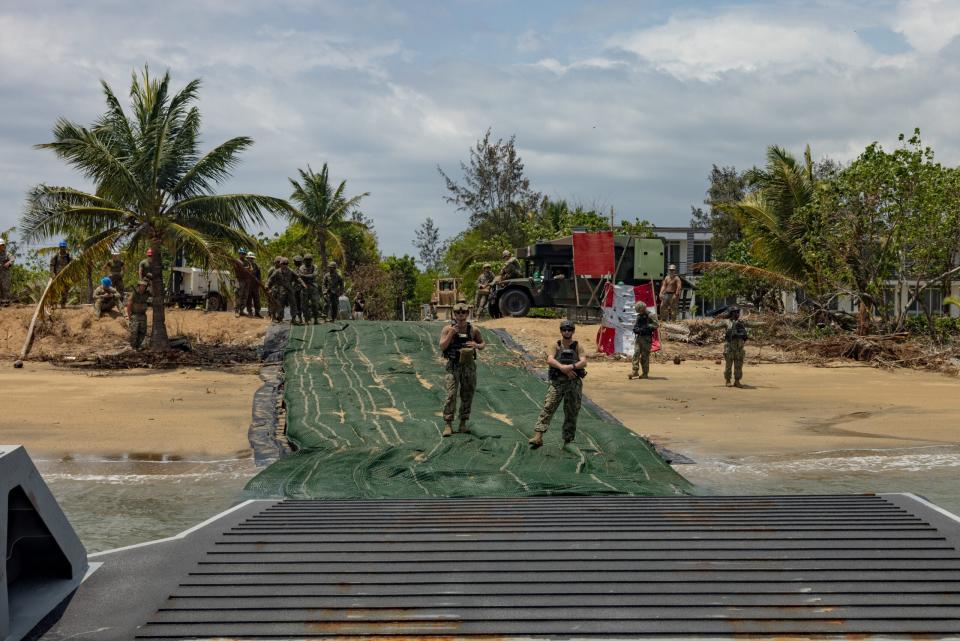
9-13. Crews then can drive the equipment right off the military ships and boats
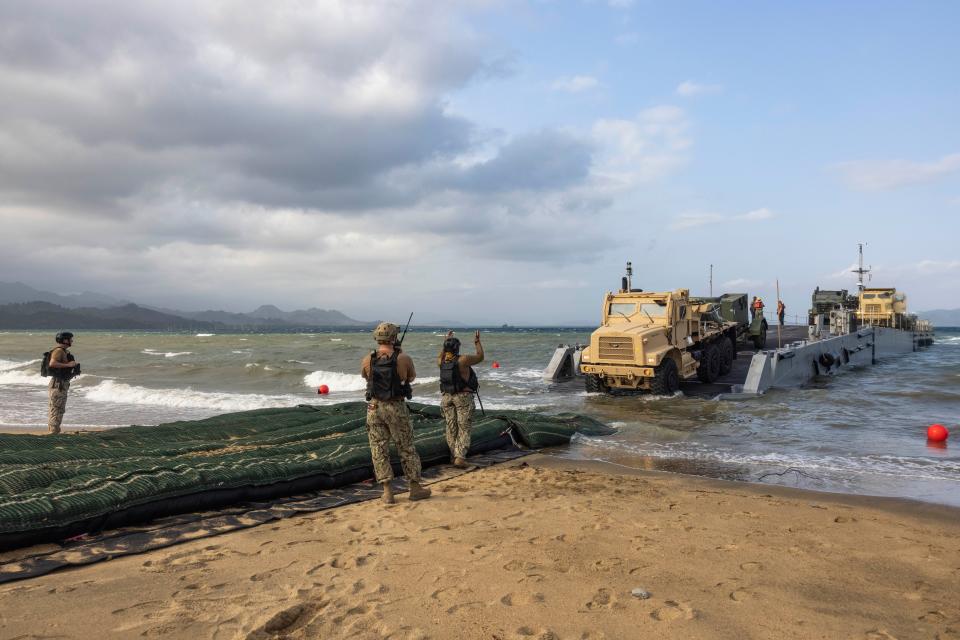
Once they're on the shore, the Marines and sailors who typically use the equipment can hop into their drivers' seats and get to work. If the landing is contested, the early troops will be combat troops to establish the beachhead and defend it. But in humanitarian and disaster relief missions, expect a lot of food, water, medicine, and equipment for re-opening roads and moving debris.
